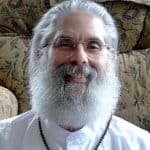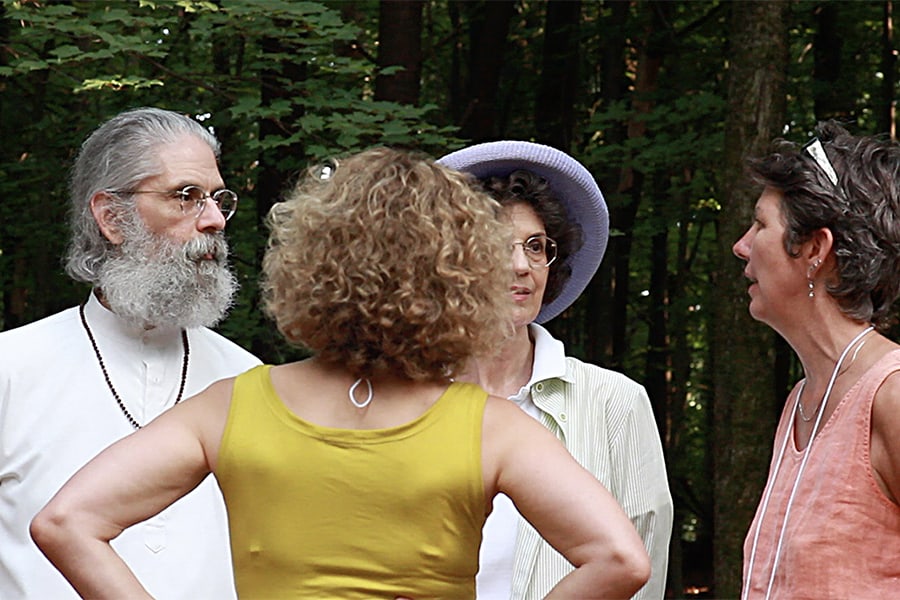Like water naturally taking the shape of the container in which it finds itself, your will, deeds and destiny conform to the company you keep. It’s true. What you give your attention to has an enormous influence on the life you live. If the company you keep, both mentally and physically, is chosen unconsciously, stress and dis-ease will likely follow. But if the company you keep is chosen consciously, with discrimination, it’s likely that happiness, health and security will follow.
How do I know? In 1978, shortly after I began my spiritual journey in earnest, my teacher, Swami Rama of the Himalayas, taught me that I am the architect of my life; I determine my destiny, and that if I were willing to make choices based on the Truth revealed by my own inner wisdom instead of relying on old habits, a new constellation of relationships would bring me everything I need—physically, mentally, emotionally and spiritually. Because I believed my teacher and had faith in the lineage of teachers that preceded him, I started experimenting with the knowledge he shared. I began pruning away a variety of internal and external relationships that conflicted with the Truth revealed by my conscience (buddhi). As a result of seeking the company of the wise in a coordinated and disciplined manner, my life was indeed transformed from stress into strength and my dis-ease gave way to ease.
The relationship I developed with Swami Rama is variously referred to as satsang, satsanga or sangha. An essential element of Yoga Science, it supports and deepens your meditation practice and spiritual understanding. The Sanskrit term satsang comes from the words sat, which means “eternal Truth” and sanga meaning “company.” The practice of satsang implies (1) remaining in the company of the “highest Truth,” (2) receiving the wisdom of a qualified teacher, and (3) gathering together with like-minded people to hear (or read) spiritual literature, to discuss it, assimilate it, contemplate its meaning, and then to be inspired to apply the revealed Truth in daily life.
One of the earliest forms of satsang in ancient India developed as the study of the scriptures now known as the Upanishads. In fact, the term Upanishad itself is a definition of satsang. Upanishad literally means “to sit down near,” and implies listening closely to a guru or a spiritual teacher who has already realized certain fundamental truths concerning life—both here and hereafter. A student participating in a satsang on the Upanishads can learn the fundamental teachings of karma (action and consequence), samsara (reincarnation), moksha (liberation), the atman (the nature of the soul), and Brahman (The Supreme Reality or God).
Two thousand years ago Jesus of Nazareth, speaking as the enlightened, Christ-conscious teacher, provided helpful insight into the profound nature of satsang when He taught, “Where two or three are gathered in My Name, I am there in their midst.” Is the Christ offering magic by this statement? Of course not. He is stating a spiritual law: when earnest students of an accomplished teacher come together seeking the highest Truth, they will receive inspiration and clarity that can advance their spiritual understanding. But it is not only the realized teacher who is the Christ’s wisdom-messenger. In my own experience of many satsangs, often a well-intentioned question from the least knowledgeable person present can spark the light of illumination.
Our Western culture provides many blessings but few situations in which a spiritually minded person can solicit or receive philosophically enriching conversation on questions like, “Who am I, from where have I come, why am I here, what shall I do, and where will I go after death?” For those who sense there is something more to life than just work, food, shopping, sex, travel and sleep, satsang can provide the wisdom and inspiration to balance worldly responsibilities with philosophical and spiritual insight and support. Satsang can help us reconnect with ancient, half-forgotten wisdom, and can serve as a reliable means to discover truths we might otherwise struggle to find. Aside from the actual ideas shared during satsang, spending time with like-minded seekers can provide a deeply nurturing experience, a vibrant sense of community, and a comfort that comes from knowing we are not alone on the road less traveled.
About the author

Leonard Perlmutter (Ram Lev)
Leonard is an American spiritual teacher, a direct disciple of medical pioneer Swami Rama of the Himalayas, and a living link to the world’s oldest health and wisdom spiritual tradition. A noted educator, philosopher and Yoga Scientist, Leonard is the founder of the American Meditation Institute, developer the AMI Foundation Course curriculum, and originator of National Conscience Month. He is the author of the award-winning books The Heart and Science of Yoga and YOUR CONSCIENCE, and the Mind/Body/Spirit Journal, Transformation. A rare and gifted teacher, Leonard’s writings and classes are enlivened by his inspiring enthusiasm, vast experience, wisdom, humor and a clear, practical teaching style. Leonard has presented courses at the M.D. Anderson Cancer Center, numerous medical colleges, Kaiser Permanente, the Commonwealth Club of California, the U. S. Military Academy at West Point and The New York Times Yoga Forum with Dean Ornish MD.

